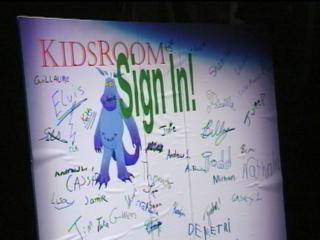 Story Design
Story Design
| The KidsRoom story was designed specifically for an interactive space using perceptual input. This page lists some of our design decisions and some of the observations we made about writing interactive stories for children as we implemented the system. |
Design decisions
- The primary mode of perceptual feedback is rich sound and narration.
- Graphics and animations are limited to simple, 2-D storybook images.
- The KidsRoom enhances a real physical space instead of creating a virtual space.
- The room only responds to large body actions.
- Characters stay consistent throughout the story.
- The children are encouraged to work collaboratively.
- Sensor constraints are built into the story in a natural way.
- The only object is a moveable bed.
- The perceptual systems should fail gracefully.
Observations
- A working exploratory space is difficult to achieve by a system that must rely on computational algorithms for processing perceptual input. The KidsRoom story was forced to be primarily linear.
- Children must always be clear of the current task.
- Group activity is very different than individual activity.
- The story must take into account the children’s behavioral "momentum."
- Sensor lag makes exploratory spaces difficult.
- Children require attention-grabbing cues.
- Whispered hints provide a natural (and required) method of feedback.
- People are very sensitive to timing, which is tricky to tune well when multiple scenerios must be anticipated.
- Narrative segments should be short, permitting better system responsiveness.
- Every story decision point must have several backup narrations in addition to a final narration for "move-on anyway" situations.
- The story should not violate reasonable expectations or set up expectations the perceptual system can’t meet.
- With multiple people in the space, determining causality is sometimes difficult.
- When the system does understand something about the room’s environment, it should be certain to convey that to the room’s participants through the story. Don’t waste information.
- A short design cycle is required between narrative programming and narrative writing/recording/editing.
- The segment most like a video game was one of the most popular.
- Methods for incorporating non-repetitive narration and hints should be designed into the story.
Note: For more detail on each point, see the KidsRoom paper cited in the Info section.
